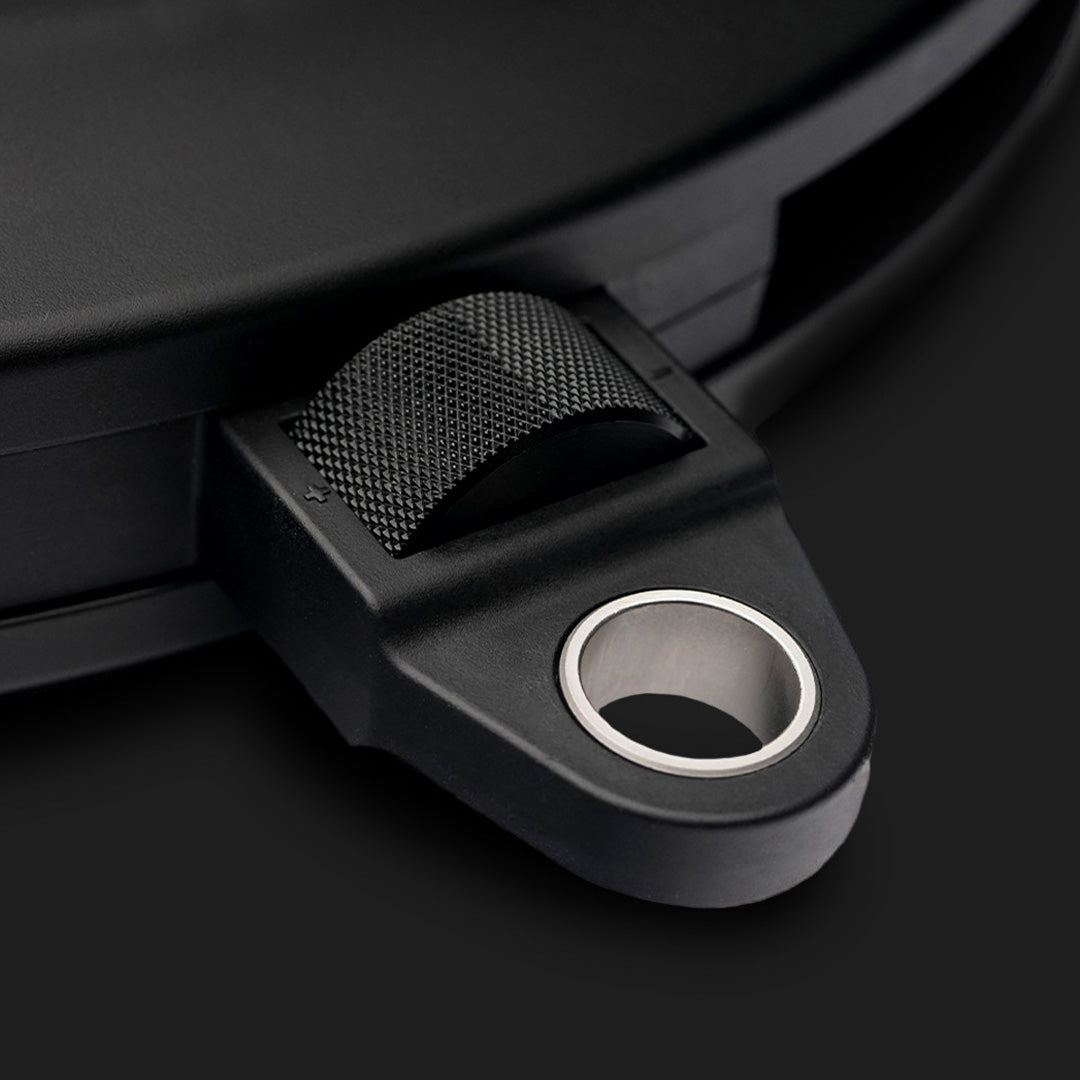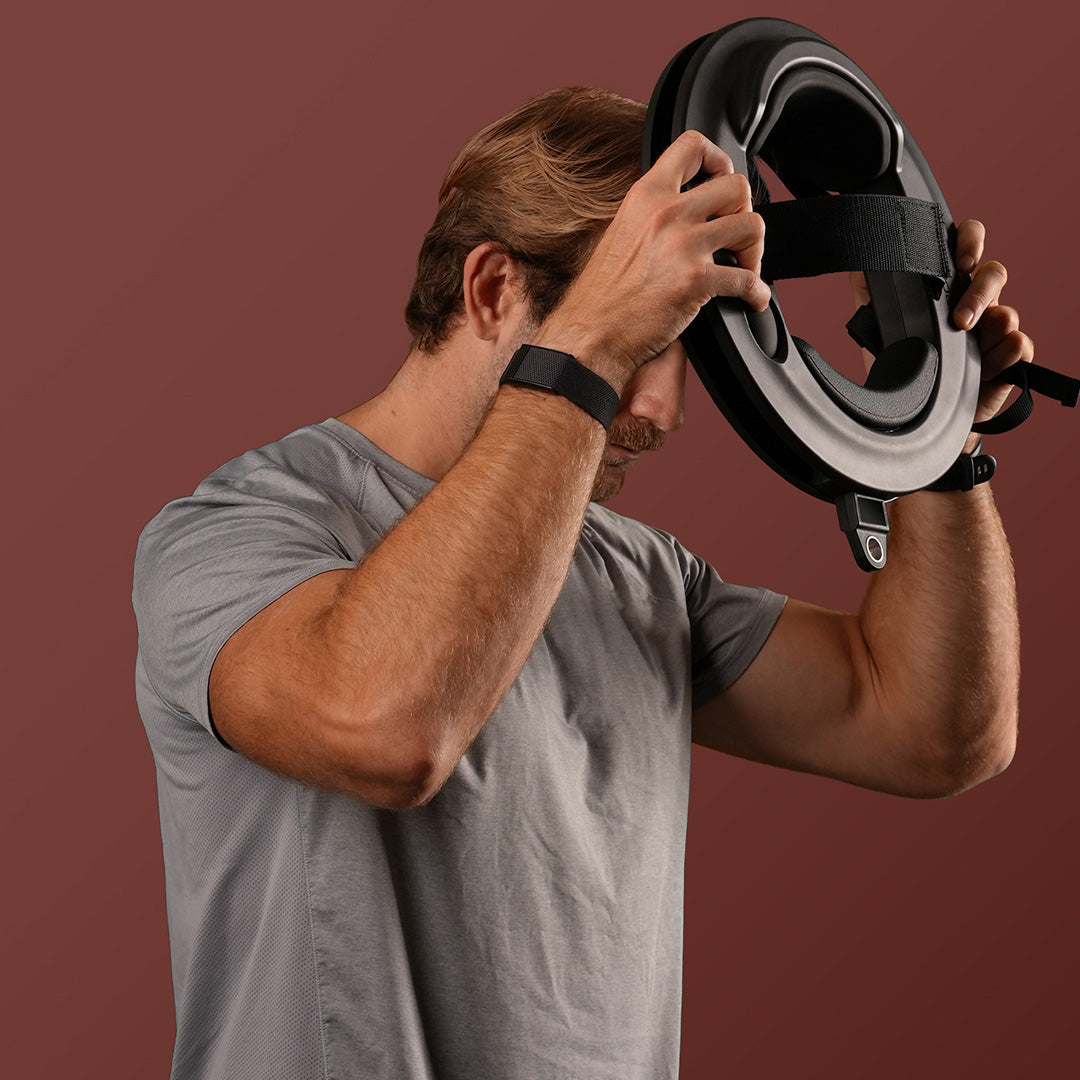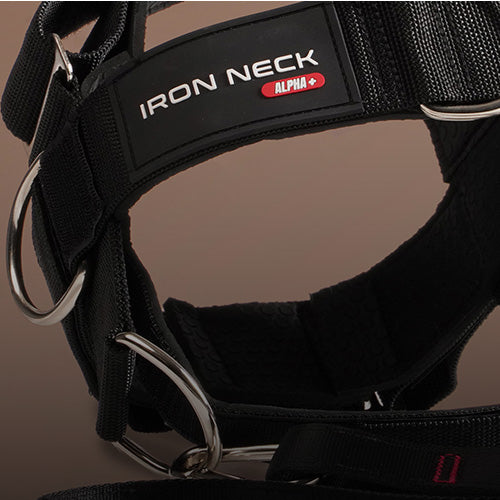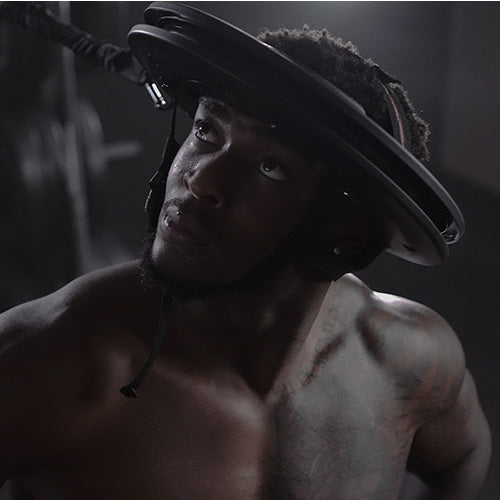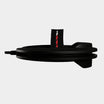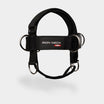It’s easy to overlook the pivotal role our neck plays in overall well-being and functionality. Yet, neck pain and discomfort are all too common, often rooted in poor posture and muscular imbalances.
Enter the chin neck tuck exercise - a simple yet powerful movement designed to combat these issues head-on. But what is this movement, and what does the chin tuck exercise do?
This guide will walk you through how to do chin tuck exercise exercise while showcasing how this straightforward practice can alleviate neck pain, enhance posture, and contribute to your holistic health journey.
Whether you’re at the office, at home, or on the go, integrating this exercise into your routine can yield transformative results.
What is the Neck Tuck Exercise?
The neck tuck, also commonly referred to as the chin tuck movement, is a movement that strengthens and aligns the neck and upper back muscles.
Its simplicity allows for accessibility to a wide audience, ranging from those experiencing neck pain due to poor posture, to individuals looking to enhance their neck strength and mobility.
Defining the Movement
The chin tuck is characterized by the gentle movement of drawing the chin directly back towards the spine, creating a double chin effect.
This action engages the deep cervical flexors, a group of muscles critical for maintaining good neck posture. The exercise does not involve tilting the head up or down but maintains a level gaze, ensuring that the motion is controlled and isolated to the neck region.
The beauty of the movement lies in its versatility. It can be performed anywhere, at any time, requiring no special equipment. It serves as an excellent introductory exercise to more advanced neck training, promoting awareness and control over the neck muscles.
That being said, its simplicity also leads to issues in progression - which we’ll discuss more in-depth later on as we talk about rounding out your neck training efforts.
The Anatomy of the Neck and Targeted Muscle Groups
The neck, or cervical spine, is a complex structure comprised of vertebrae, muscles, and ligaments. Our guide on neck anatomy is worth reading if you haven’t already, but we’ll highlight the muscles this movement works below.
The chin tuck specifically targets the deep cervical flexors, including the Longus Colli and Longus Capitis muscles. These muscles are crucial for maintaining a neutral cervical (neck) spine position.
- Longus Colli: This muscle is positioned at the front of the vertebral column and is responsible for flexing the neck and upper spine. It plays a vital role in stabilizing the cervical spine, aiding in the prevention of chronic conditions such as neck pain and headaches. This is why the neck tuck exercise is one of our favorite neck stability exercises.
- Longus Capitis: This muscle assists in the stabilization of the head atop the cervical spine, contributing to the overall balance and alignment of the neck.
- Sternocleidomastoid and Scalene Muscles: While the primary focus of the chin tuck is on the deep cervical flexors, it also indirectly involves the lengthening and relaxing of the Sternocleidomastoid and Scalene muscles, promoting a balanced muscular environment.
That being said, let’s look at some of the specific benefits of the neck tuck exercise below before showing you how to do chin tuck exercises.
What Does the Chin Tuck Exercise Do? Benefits of Neck Tuck Exercise
There are a myriad of benefits of neck exercises in general - but what does the chin tuck exercise do that has made it such a popular movement?
Improving Posture and Alignment
This movement plays a vital role in enhancing postural alignment. It encourages a neutral spine position by strengthening the deep cervical flexors, counteracting the forward head posture commonly developed from prolonged screen time.
This alignment not only improves aesthetic appearance but also optimizes biomechanical efficiency, reducing the load on cervical structures and mitigating the risk of injury.
But, how long does it take to correct forward head posture? We have guides on nerd neck exercises, how to strengthen neck muscles for posture, and how to get rid of tech neck if you’d like to learn more.
Alleviating Neck Pain and Tension
Neck pain and tension often result from muscular imbalances and poor postural habits. This exorcist directly targets these issues by promoting muscle equilibrium and releasing tension in overworked areas. It’s perfect for those who are carrying stress in the shoulders and neck.
Regular practice leads to a noticeable reduction in discomfort, contributing to a pain-free and more comfortable daily life. Speaking of neck pain, we have guides on dealing with neck pain after a workout or neck pain from driving. But, just know this - the movement can help you relax neck muscles.
Enhancing Mobility and Range of Motion
A full range of motion in the neck is crucial for functional movement and injury prevention - whether you’re an athlete looking to reach your full potential or simply trying to check your rearview mirror safely when driving.
This movement aids in maintaining and enhancing this mobility. It ensures smoother, pain-free movement in all directions working on the deep and superficial muscles of the neck. In fact, it’s a great choice for those looking for neck mobility exercises.
Strengthening Neck Muscles for Long-Term Health
Building strength in the neck muscles is a preventative measure against chronic issues and acute injuries. If you aren’t sure why that is, it’s worth reading our guide on weak neck muscles.
The exercise fortifies these muscles, promoting resilience and stability. This strength is particularly vital as we age, helping to maintain functionality and independence. We’ll talk more about how to build neck muscles at home in just a bit.
Supporting Respiratory Function and Airway Openness
A less-known benefit of the movement is its positive impact on respiratory function. Proper alignment and muscle engagement can help keep the airways open, facilitating easier breathing. This is especially beneficial for individuals with sleep apnea or other respiratory conditions.
Contributing to Overall Wellness and Quality of Life
The chin neck tuck exercise plays a comprehensive role in improving quality of life. As you now know, it can aid you in addressing postural issues, reducing pain, enhancing mobility, and supporting respiratory function.
So, let’s get into our guide on how to do chin tuck exercises for neck pain, posture, and more to help you maximize the benefits it has to offer!
How to Do Chin Tuck Exercise for Neck Pain, Posture, and More
The beauty of the chin tuck exercise is in its simplicity. You don’t necessarily need any equipment to perform the exercise - you can do it from your office chair, your couch, you name it!
That being said, the exercise is more of a jumping-off point for neck training that empowers you to progress to more challenging, versatile movements with resistance. We’ll touch on that next. First, here is how to do chin tuck exercise…
Step-by-Step Instructions on Performing the Chin Neck Tuck Exercise
The chin tuck movement is renowned for its simplicity and effectiveness, making it a popular choice for those looking to improve posture and alleviate neck pain. To reap the maximum benefits, follow these steps:
- Find a Comfortable Position: Start by sitting or standing upright in a comfortable position. Ensure your spine is straight, and your shoulders are relaxed but pulled slightly back.
- Look Straight Ahead: Focus your gaze directly in front of you, keeping your head level. This is your neutral position.
- Gently Tuck Your Chin: Gently draw your chin straight back without tilting your head up or down. Imagine you are trying to create a double chin or pressing the back of your head into an imaginary wall behind you.
- Hold the Position: Maintain this tucked position for about 5 seconds, feeling a gentle stretch along the back of your neck and into your upper back.
- Release and Repeat: Slowly return to the neutral position. Take a moment to relax before repeating the exercise. Aim for 10-15 repetitions per session.
- Stay Mindful of Your Breathing: Keep your breathing steady and relaxed from start to finish. Avoid holding your breath.
Progressing Chin Tuck Exercise With Iron Neck
Once you are comfortable with the basic movement and are looking to enhance its effectiveness, incorporating the Iron Neck can take your neck training to the next level. In fact, the neck tuck exercise is one of the best neck exercises for mass when loaded with a bit of resistance!
The Iron Neck is a transformative neck machine that empowers you to train your neck from 360 degrees with smooth resistance. You can use it as part of your neck workouts at home or bring it to the gym with you.
Either way, you’ll want to eventually start progressively overloading the exercise - which means adding incrementally more resistance each subsequent workout. It’s important to continue challenging your body to prevent stagnation.
The Iron Neck is also really simple to use. Put on the harness after attaching your anchor point. Choose a low resistance level if this is your first time using the device. Step back away while facing your anchor point - this will lead to a bit of tension pulling you forward, which is where the resistance comes from.
Then, let your head drift forward. Think about pointing your nose toward the anchor point. You can then begin the chin tuck movement, bringing your head back in alignment straight back and making that double chin. Hold the position for a few minutes and feel that resistance in your neck. You can then return to the starting point.
The Iron Neck is an investment in your health and well-being. That being said, our neck harness is an affordable alternative if you want to get started on a budget.
Where the Chin Neck Tuck Exercise Falls Short…
While the chin tuck exercise offers numerous benefits for improving posture, reducing neck pain, and enhancing mobility, it’s not a catch-all solution. It's crucial to be aware of its limitations and understand the importance of incorporating a variety of movements for comprehensive neck health.
Addressing Potential Limitations in Muscle Engagement
The chin tuck primarily targets the deep cervical flexors, muscles critical for neck stability and proper head alignment. However, the neck is a complex structure, supported by a myriad of muscles, and the chin tuck doesn't engage them all.
For example, it provides limited engagement for the lateral and posterior neck muscles, which are crucial for side-to-side movements and supporting the head from behind. You need movements that target the side neck muscles too.
Additionally, while the chin tuck can help alleviate forward head posture, it may not fully address issues related to lateral neck tilting or rotation. This could leave certain muscle groups underdeveloped, potentially leading to imbalances and increasing the risk of injury over time.
Discussing the Need for a Variety of Movements for Comprehensive Neck Health
It's vital to incorporate a diverse range of exercises that target the various muscle groups surrounding the neck and upper back to foster comprehensive neck health.
Engaging in a variety of movements ensures that all the supporting muscles are strengthened evenly, promoting balance and reducing the likelihood of muscle imbalances.
The inclusion of rotational exercises, lateral flexion, and extension movements can help address the areas that the chin tuck might miss. This will contribute to a well-rounded neck training regimen that supports long-term health, enhances performance, and mitigates the risk of injury.
Other Movements to Round Out Your Training Regimen
Just like we said in our guide to the neck bridge exercise, you never want to rely on a single movement as the foundation of your training.
Knowing the importance of incorporating a variety of exercises into your routine is crucial, here are some additional movements to add to your regimen…
Locked Neck Body Turns
This exercise enhances rotational mobility and strengthens the muscles around the neck and upper back. It also encourages fluidity in movement, helping to prevent stiffness and improve circulation around the cervical region.
You can stand or sit upright to perform it. Either way, step back from your anchor point with tension on your Iron Neck.
Then, keeping your entire upper body in alignment, turn all the way to the left, keeping your feet planted and your lower body stable.
After reaching as far into your ROM as possible, pause for a moment and return to the center, then turn your body all the way to the right.
Look Left, Look Right
This is a simple yet effective movement that focuses on improving lateral flexibility and strength. This not only works the side neck muscles but also aids in relieving tension that can accumulate from prolonged periods of static posture.
From a neutral starting position, turn your head to the left as far as comfortable, hold for a moment, and then switch to the right.
The goal is to get your chin in line with your shoulder - but your existing mobility will dictate how far left/right you can look. Don’t force the stretch through pain.
Protraction
This exercise will train the exact opposite movement pattern as the chin tuck exercise - which is also known as retraction. Protraction, on the other hand, will have you face away from your anchor point with resistance pulling you back towards the anchor point.
Then, extend your head outwards - pointing your nose towards some point in front of you. After pushing your nose out as far as you can and feeling the stretch in your neck, pause for a moment before slowly returning back to a neutral cervical spine position.
Figure Eights
Incorporate dynamic movement with this exercise by moving your head in a ‘figure eight’ pattern. This enhances mobility, challenges your muscle coordination, and adds a fun, varied movement to your routine.
It’s the most comprehensive of all the exercises we’ve shared, and one you should only perform with resistance after getting the movement pattern down without any load first.
Parting Thoughts on the Chin Neck Tuck Exercise
The neck tuck exercise stands out as a fundamental movement in building neck strength, improving posture, and alleviating pain. Its simplicity makes it accessible, yet its impact on neck health is substantial.
And now that you know how to do chin tuck exercise, you can pave the way to a healthier, more resilient neck by incorporating it into your routine and combining it with a range of movements.
Stay consistent with your neck tuck exercise progression and round out your training with some of the other exercises we shared today. Before you know it, the neck workouts before and after results you’ll see will be night and day! You’ll look better and you’ll feel better, too.
You can learn more about how to get a strong, healthy, thick neck in our blog. We have resources on neck skin tightening exercises, vagus nerve compression, turkey neck exercises, why does my neck feel tight, neck exercises for vertigo, neck fat exercises, exercises for a pinched nerve in the neck, neck spasm exercises, exercises for neck arthritis, neck exercises for cervical stenosis, and more.
Otherwise, get the #1 neck harness alternative today: the Iron Neck. Invest in your well-being today and experience the transformative power of comprehensive neck training with Iron Neck.

